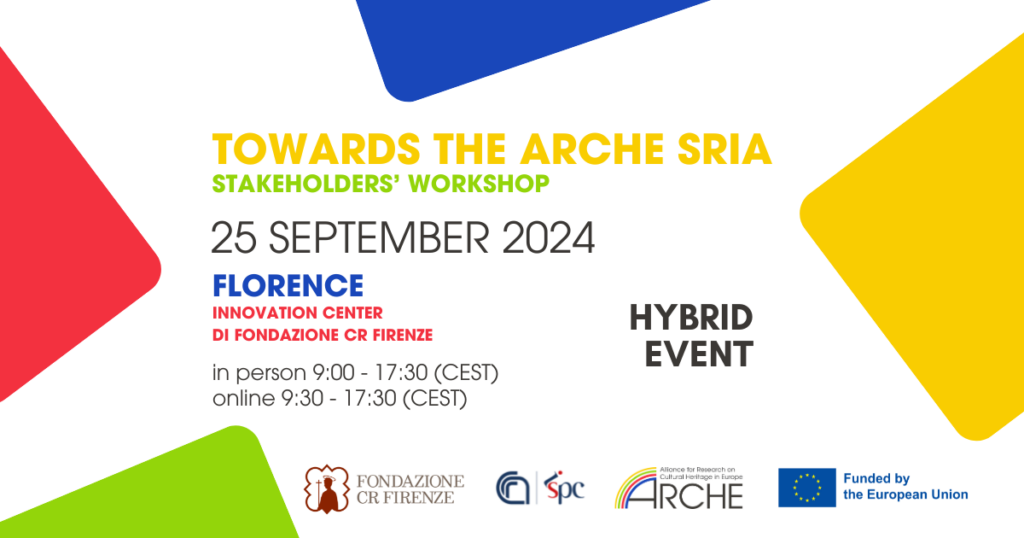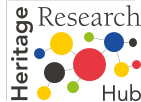The Institute for Heritage Science of the National Research Council of Italy (CNR) will organise on 25 September 2024 a workshop called “Towards the ARCHE SRIA” within the framework of the Horizon Europe-funded ARCHE project (Alliance for Research on Cultural Heritage in Europe), the preparatory project for the European Partnership for Resilient Cultural Heritage (RCH). The event will take place at the Innovation Center di Fondazione CR Firenze and will present the preliminary findings of the new Strategic Research and Innovation Agenda (SRIA). This SRIA is a roadmap with research priorities that will form the basis for joint transnational activities expected to start in 2026, within the RCH Partnership.

The ARCHE project started in September 2022 and lasts until August 2025. Its purpose is to develop a pan-European framework for a holistic approach to cultural heritage research and innovation, by creating the Alliance for Research on Cultural Heritage in Europe, a spearheading coordination network of researchers, innovators, heritage professionals, institutional bodies and citizens. The aim is to engage a large variety of cultural heritage actors in Member States / Associated Countries in the co-design of research and innovation strategies and roadmaps that lead to research and innovation initiatives requiring multidisciplinary approaches and skills.
Take a look at the preview of the program now available here!
The SRIA has been developed collaboratively, integrating internal efforts within the ARCHE consortium with consultations from external stakeholders. These consultations were conducted through both online and in-person workshops. The first workshop, titled “Resilient cultural heritage in times of climate crisis” was organized by the Prussian Cultural Heritage Foundation (SPK) and held in Berlin between 16-17 April 2024. The process will continue with the upcoming event in Florence, where stakeholders will be invited to respond to the preliminary findings of the SRIA and offer additional input.
The Florence event will also be the occasion of launching a consultation survey, available on the European Commission portal from September to November 2024, that will be a crucial step to gather contributions and feedback from Member States and Associated Countries, public and private stakeholders, policymakers, experts and citizens from the cultural heritage sector and beyond. This feedback will be a direct contribution to the future SRIA and, therefore, to the future of heritage research and innovation in Europe (and not only) and the ways in which cultural heritage could be used as an active asset that would tackle some of the biggest societal challenges at the moment (e.g. the climate crisis).
Following the event, the broad heritage research & innovation community can engage in more in-depth discussions through the online Heritage Research Forum. The Heritage Research Forum is an interactive platform that is acting as a matchmaking and co-design space throughout ARCHE’s and RCH’s lifespan in which users will be able to directly consult these intermediary outputs of the SRIA drafting process and provide their insights. The access to the platform is free and all interested users need to do is register on the Heritage Research Hub website.
Please note that the event will take place in hybrid format. Should you want to attend the event on-site, we highly encourage you to register as soon as possible, due to the limited capacity of the venue. To secure your participation in the event, please register here until 8 September 2024.
Learn more about the project here.
For further inquiries, please contact:
Vania Virgili, SRIA Work Package leader (vania.virgili@cnr.it)
Alexandre Caussé, ARCHE Coordinator (alexandre.causse@sciences-patrimoine.org)
